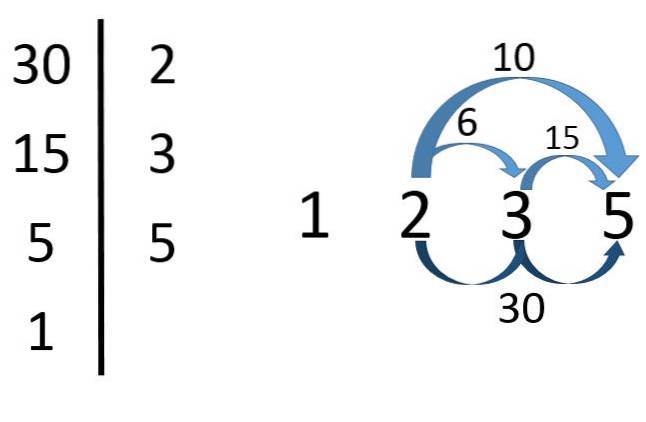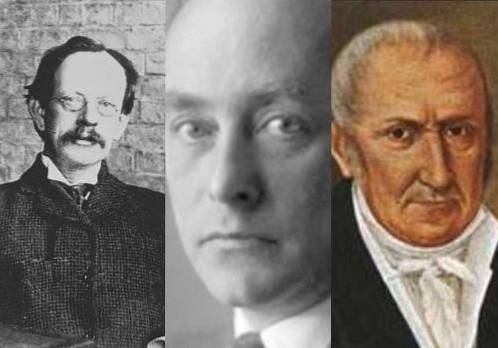
What are the divisors of 30?
Quickly it can be known what are the divisors of 30, as well as any other number (other than zero), but the fundamental idea is to learn how the divisors of a number are calculated in a general way.
Care must be taken when talking about divisors, because it can be quickly established that all divisors of 30 are 1, 2, 3, 5, 6, 10, 15 and 30, but what about the negatives of these numbers ? Are they dividers or not?

To answer the previous question, it is necessary to understand a very important term in the world of mathematics: the division algorithm.
Division algorithm
The division algorithm (or Euclidean division) says the following: given two integers "n" and "b", where "b" is different from zero (b ≠ 0), there are only integers "q" and "r", such that n = bq + r, where 0 ≤ r < |b|.
The number “n” is called a dividend, “b” is called a divisor, “q” is called a quotient and “r” is called the remainder or remainder. When the remainder "r" is equal to 0 it is said that "b" divides "n", and this is denoted by "b | n".
The division algorithm is not restricted to positive values. Therefore, a negative number can be a divisor of some other number.
Why is 7.5 not a divisor of 30??
Using the division algorithm it can be seen that 30 = 7.5 × 4 + 0. The remainder is equal to zero, but it cannot be said that 7.5 divides by 30 because, when we talk about divisors, we are only talking about whole numbers.
Divisors of 30
As can be seen in the image, to find the divisors of 30, its prime factors must first be found.
So, 30 = 2x3x5. From this we conclude that 2, 3 and 5 are divisors of 30. But so are the products of these prime factors.
So 2 × 3 = 6, 2 × 5 = 10, 3 × 5 = 15, and 2x3x5 = 30 are divisors of 30. The 1 is also a divisor of 30 (although it is actually a divisor of any number).
It can be concluded that 1, 2, 3, 5, 6, 10, 15 and 30 are divisors of 30 (all comply with the division algorithm), but it must be remembered that their negatives are also divisors.
Therefore, all the divisors of 30 are: -30, -15, -10, -6, -5, -3, -2, -1, 1, 2, 3, 5, 6, 10, 15 and 30.
What has been learned above can be applied to any whole number.
For example, if you want to calculate the divisors of 92, proceed as before. Decomposes as a product of prime numbers.
Divide 92 by 2 and get 46; now divide 46 by 2 again and get 23.
This last result is a prime number, so it will not have more divisors besides 1 and the same 23.
We can then write 92 = 2x2x23. Proceeding as before, it is concluded that 1,2,4,46 and 92 are divisors of 92.
Finally, the negatives of these numbers are included in the previous list, with which the list of all divisors of 92 is -92, -46, -4, -2, -1, 1, 2, 4, 46, 92.
References
- Barrantes, H., Díaz, P., Murillo, M., & Soto, A. (1988). Introduction to Number Theory. San José: EUNED.
- Bustillo, A. F. (1866). Mathematics Elements. Imp. Of Santiago Aguado.
- Guevara, M. H. (s.f.). Theory of Numbers. San José: EUNED.
- J., A. C., & A., L. T. (1995). How to Develop Mathematical Logical Reasoning. Santiago de Chile: Editorial Universitaria.
- Jiménez, J., Delgado, M., & Gutiérrez, L. (2007). Guide Think II. Threshold Editions.
- Jiménez, J., Teshiba, M., Teshiba, M., Romo, J., Álvarez, M., Villafania, P., Nesta, B. (2006). Mathematics 1 Arithmetic and Pre-Algebra. Threshold Editions.
- Johnsonbaugh, R. (2005). Discrete mathematics. Pearson Education.



Yet No Comments